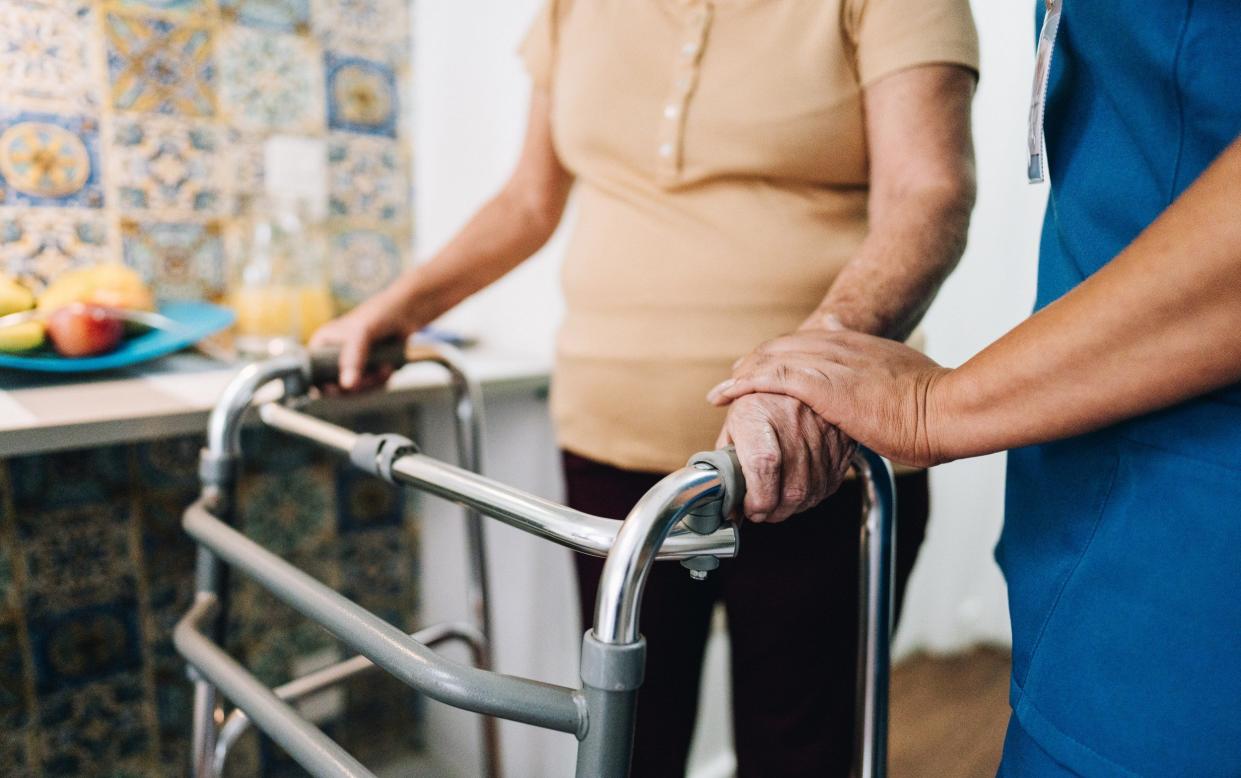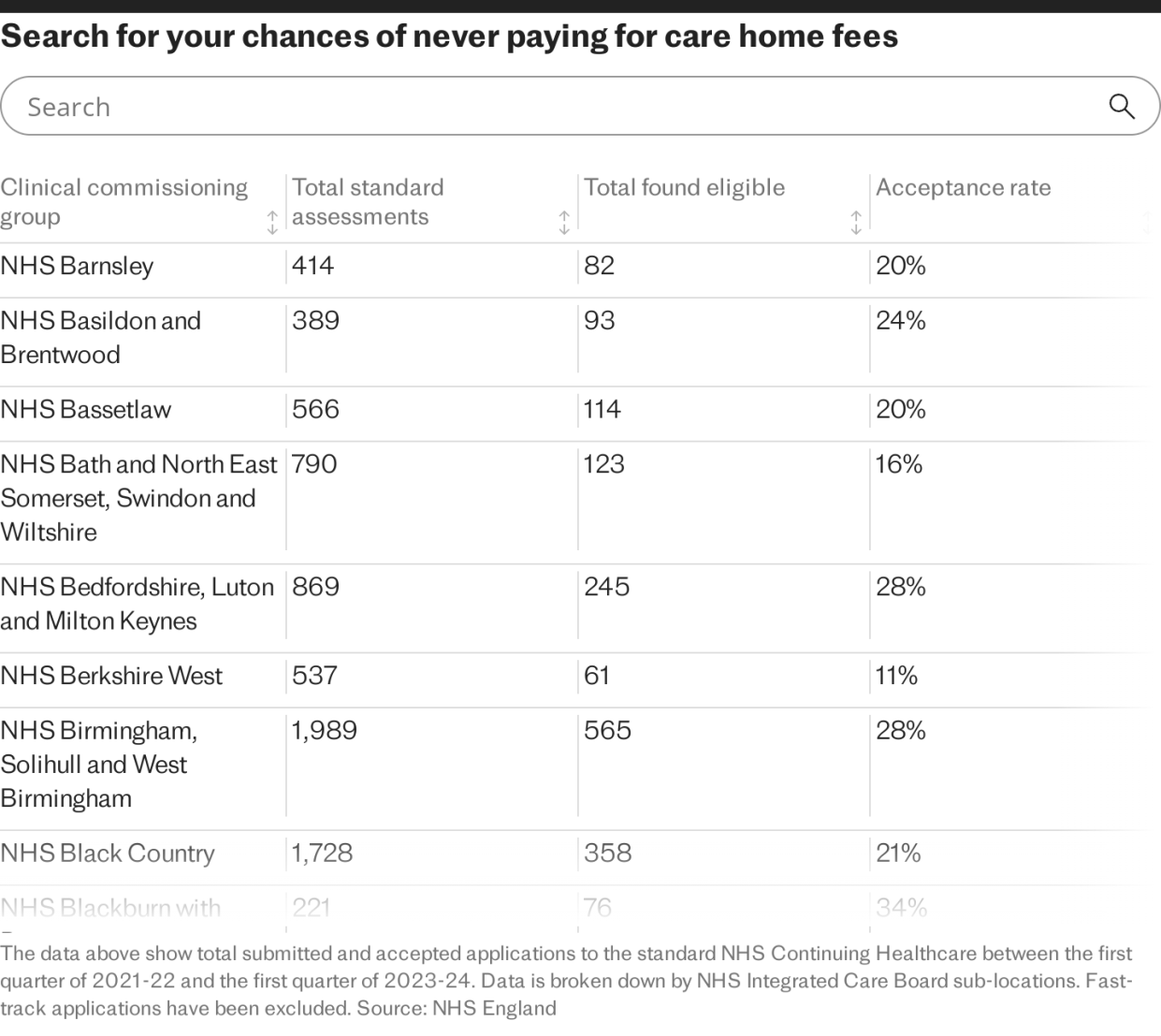How to get the state to pay for care in your own home (even if you’re rich)

As residential care costs continue to rise to nearly £50,000 a year, many people are looking for alternatives to a residential home if they need care. Residents can spend several years in a care home, and it is not difficult to see how care costs can eat into someone’s capital, with some deciding to sell their home if their savings run out.
These “self-funders” are good news for councils. Local authorities have upper limits on how much they are willing to pay for someone’s care in a home. This is usually well below the rate it actually costs to keep someone in a home.
Because local authority residents pay less than it costs to keep them, care homes need to recoup this from people who pay for their own care. Self-funders are, therefore, subsidising local authority residents. As well as this, most people who need care do not need 24-hour personal care.
Although they will probably need help bathing, changing and possibly feeding, they often need only supervision or company for a large part of the day. Therefore, residents in care homes are again paying for care they do not actually need.
However, the availability of state benefits like the Attendance Allowance and Carer’s Allowance can sometimes mean that being looked after at home works out cheaper in the long run than paying for care in a residential home. This is especially true when someone needs only low levels of care for most of the day.

Attendance Allowance is not means tested and is a non-taxable state benefit which is paid for someone who needs help with personal care, at the rate of £101.75 a week or £68.10 a week depending on the level of care needed.
For these purposes, “help” and “supervision” mean telephone calls as well as in person visits.
As well as this, someone regularly looking after an individual who claims Attendance Allowance can also claim the Carers Allowance of £76.75 per week. But, unlike Attendance Allowance, Carer’s Allowance is not available for someone with earnings over £139 per week after tax and other expenses, which include:
50pc of pension contributions
Work equipment needed
Travel costs between different workplaces
Self-employed business expenses
It is also possible to deduct childcare costs which are less than or equal to 50pc of earnings.
Somewhat surprisingly, there is nothing to stop someone being paid to care for a person also claiming Carers Allowance for looking after them.
How the allowances work in practice
Anne lives with her husband, has the beginnings of dementia and gets agitated when not at home, so the family decide it would be better if she stayed there. Her husband is not able to care for her properly.
She gets Attendance Allowance at the highest rate of £101.75 a week. She pays Emma £365 per week to come into the house every day. Emma has a small child, Noah, who goes to nursery when she looks after Anne.
As Anne gets £101.75 per week for Attendance Allowance, she needs to find an additional £263.25 a week to pay Emma. Emma is also able to claim Carer’s Allowance of £76.75 a week. This works out much cheaper than a care home.
As Anne’s husband is in for most of the day and night, he is able to ensure she comes to no harm.
If Anne needed further care at any point, or she lived on her own, it would generally be possible to arrange this through a local college which trains 16-to-18 year olds in social care. Often young people will gladly sleep over or generally supervise an older person. This gives them an advantage in the jobs market as well as providing spending money.

Once someone’s cash starts to run out, the local authority has a duty to take on the responsibility of social care. This includes someone who wants to be cared for in their own home.
Council funding is means tested, but a person’s home and their personal possessions are not included in the means testing if they still live in their home. If someone went into a care home, however, then their home would also be included in the means testing.
If their capital is below £14,250, the local authority meets the whole of a person’s care needs. If they have capital of above £23,250, they must meet all of the care costs. Between those amounts, people are expected to pay for some of their care. These upper and lower limits are changing, to £20,000 and £100,000 respectively, in October 2025.
Local authorities will perform a “needs assessment” to determine what level of support is needed at the same time as doing a means test. Once they decide how much support or care is needed, they have a duty to provide that care.
Although local authorities are under huge financial pressure, they are not able to use that as an excuse not to provide the care that is needed. If the need is there, they have a duty to provide that care.
Once the local authority decides on the level of care they will provide, the individual may wish for additional care.
Relatives, friends or even charities may provide and pay for additional care. This is known as a “third party top-up”. But the individual must not pay for the additional care – it must come from a third party.
Often someone who is wanting to protect their inheritance will arrange third party top-ups as it would work out better than having to sell the home to pay for care home fees. In this case, the top-ups could be regarded as a loan, payable on death, and a record should be kept so that it reduces the value of the estate for distribution and for inheritance tax.
Lynne Thompson formerly worked at the Department for Work and Pensions, was a chartered tax adviser and is now retired


